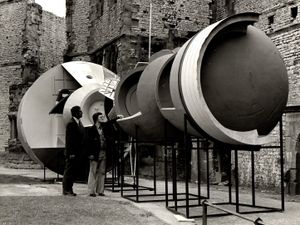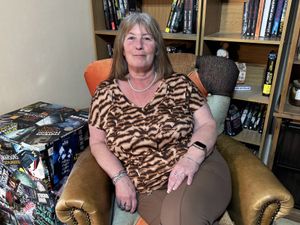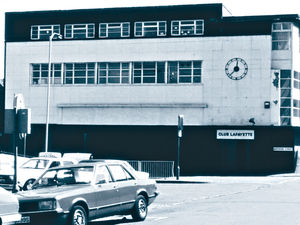A treasure trove capturing the region’s past: BFI reveals 10 most viewed Midland films
It's a treasure trove of home movies, news footage, forgotten TV programmes and government films that provide a fascinating insight into our social and cultural history.
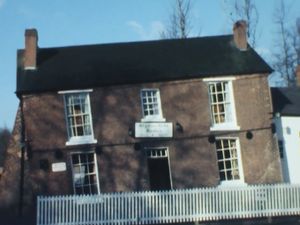
The BFI has just revealed the 10 most viewed films from the Midlands in its 10,000 strong collection collated as part of the lottery-funded Britain on Film project.
And the list features footage capturing the modernisation of Wolverhampton in 1970s and a school programme examining why and how the new town of Telford was born.
Film has been used to document daily life in Britain since the birth of cinema more than 120 years and the archival project - one of the largest and most complex ever undertaken by the BFI - was created to preserve our rich heritage of professional and amateur footage and make it available to the public.
Shining a light on issues and situations that affect every generation, many of the films have never or rarely been seen since their first appearance.
The online library has amassed 75 million views since it was launched in 2015 and features films from all over the UK, including dozens more from across our region.

There is a government film from 1973 about Ironbridge Gorge becoming a nursery for the study and conservation of our industrial past and a news interview from 1975 with the landlord of the famous Crooked House pub at Himley talking about its quirky appearance.
Industry is well represented with a glassblowing demonstration at world-renowned Stuart Crystal in Stourbridge and footage from the very last shift at Cannock Wood Colliery as 109 years of history came to an end.
Daily life around the region also features including the people of West Bromwich coming together to mark the coronation of a new king in 1937, a film capturing the sights and sounds of Walsall Market in 1973 and members of Bridgnorth Camera Club taking part in a photographic treasure hunt in 1960.
One of the last journeys on the Llanfyllin to Oswestry railway line before it was cut by Dr Richard Beeching in 1965 was also preserved for future generations.
And there are three cheers for King George V when drops in on his prize Dexter bull at the Royal Agricultural Show in Shrewsbury in 1914.
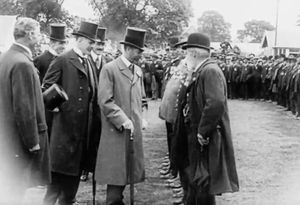
Patrick Russell, senior curator of non-fiction at the BFI said: "Britain on Film has completely transformed the British public’s access to the archives preserving UK film and TV heritage. This simply would not have been possible without funding from the National Lottery.
"Over 10,000 films from the archives are now available for everyone in the UK to enjoy – an astonishing range of content, from Edwardian tram rides to wartime public information, from quirky animations to thoughtful documentaries, forgotten feature films to home movies.
"Britain on Film explores a vast range of themes and maps the whole of the UK. We live in the moving image age and today’s audiences and filmmakers have so much to be inspired by as they explore this rich treasure trove from the past.”
The films are available to watch for free BFI’s online video platform, BFI Player, and have been drawn from the BFI National Archive and regional and national archive partners from across the UK.
Comedian and amateur film historian Paul Merton, who fronts a video on the national Top 10 most watched films from the archive, said: “Britain on Film is an ambitious project that has made the rich unseen film history of the UK accessible to the whole nation, with thousands of titles from 120 years’ worth of films drawn from the BFI National Archive and regional and national archive partners from across the UK and Northern Ireland from Victorian times to the 1990s.
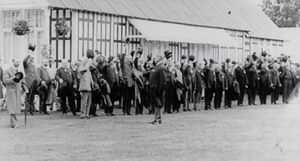
“Whilst you or I may never have heard of them before and they will never trouble the weekly box office lists, the films have captured the imagination of the British public and amassed an incredible 75 million online views.
"They are incredible and are a wonderful way to get lost in our history and heritage for an hour, or even a day. I love it, and all thanks to those pink tickets at newsagents.”
The most watched film from Midlands feature filmmakers Mitchell and Kenyon conducting an evocative ride through Edwardian Nottingham. The sequence from 1902 follows the same route as today's Nottingham Express Transit tramway, taking the viewer along Listergate and Wheelergate into Old Market Square before turning right into Long Row and on into Queen Street.
Also high on the list is a bright and breezy promotional film from 1964 which explores every concrete corner of Birmingham's original Bull Ring Shopping Centre, from planning and construction to the site's official opening, attended by Prince Philip.
The huge collection also includes a recent discovery of the world’s earliest home movies.
Dating from 1902, they are off the Passmore family on holiday in Bognor Regis and The Isle of Wight and at home in Streatham, London.
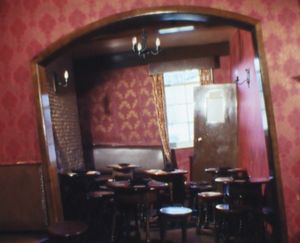
To view the online archive go to player.bfi.org.uk/free


